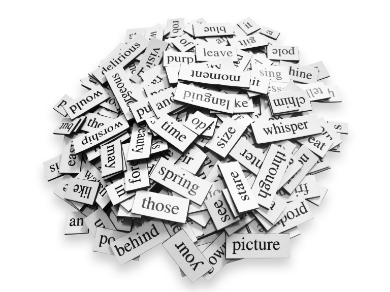How jargon can shorten your copy but confuse your reader
April 18, 2022

In a previous blog, I provided tips for overcoming writer’s block and building your first draft. In this blog, I provide some strategies to help you get from that first draft to a finished masterpiece.
Sometimes in our haste to complete a writing project, we treat the first draft like the finish line when it’s only the first hurdle. If you stop there, you’re giving up the opportunity to produce the kind of concise polished copy that gets noticed and shared.
There’s a reason it’s called a first draft. Regardless of how good a writer you are, rest assured it contains some extraneous thoughts and extra verbiage that should be tightened up or removed. Here are some ways to make it shine.

Congratulations on finishing your first draft. Now step away from it for a bit—ideally for a night or two. I know that in business, time is often a luxury you can rarely afford. Still, this element is so important, it should be considered an essential part of the writing process instead of an extra step, so make it a part of your project schedule.
Why is this so important? Perspective. Remember that old expression, “Can’t see the forest through the trees?” When you’re engaged in writing, you are deep in the word forest, building sentences but not able to see how well they come together to make your point.
When you step away from your copy for a while and come back with fresh eyes, you’ll be more objective and get to experience it (and scrutinize it) the same way your audience will. Here are a few high-level things to ask yourself as you revisit your draft:
 It’s generally well-accepted among writers that the more succinct your copy is, the more coherent it is.
It’s generally well-accepted among writers that the more succinct your copy is, the more coherent it is.
First drafts inevitably contain more words than you need. I believe this is because when we partake in that purely creative process called writing, we focus mainly on getting as many words on paper as quickly as possible versus writing for effect.
A great exercise for distilling your copy is this: Commit to reducing the current word count of your first draft by 10%. If your piece is about 1,000 words, strive to cut it down to around 900 words.
Here are some things to look for:
By turning your editing into a numbers game, it forces you to look at it differently and motivates you to make more drastic edits than you’d otherwise make. This is a valuable skill to develop, and you may find that once you commence cutting and compacting your copy, it might be hard to stop—and that’s okay.

It’s generally accepted that the average sentence length should be between 15 to 20 words. Key word: average. If all your sentences fell into that range, your writing would get predictable and dull. To keep things interesting, look for places where you can insert a short sentence for emphasis. (Like this!)
I call this “word jazz” because it parallels a technique that jazz musicians often use to break up a solo. Fortunately for you, I found a briefer and more upbeat example.
In the Ray Charles classic, “Mess Around,” there’s a short piano solo (at 1:16) that begins with a lot of fast-moving notes, representing a long musical sentence. Later, he contrasts it by coarsely banging out the same dissonant chord seven times. That’s a short musical sentence, but it makes the entire solo memorable—something that legendary actor John Candy used for comedic effect in the movie, Planes, Trains, and Automobiles.
Check out the use of word jazz in the following paragraph:
Until recently, the only way to create a virtual server was to design special software to trick a server's CPU into providing processing power for multiple virtual machines. Not anymore. Today, processor manufacturers like Intel and AMD offer processors with the capability of supporting virtual servers already built in.
That tiny two-word sentence in the middle breaks up the two longer sentences and sets up the third sentence by creating some suspense and energy.
As someone who writes for a living, I know there is a limit to how well I can proofread my own work. Beyond the tips I’ve provided above, the absolute best thing you can do before you submit a final piece is to let someone else read it—ideally someone with professional editing skills. I’m fortunate enough to have a team of top-notch MarketReach editors who meticulously review my copy, if only to ensure it’s not too funny.
But seriously, from the first word to the last, remember that writing is a process, and sometimes it becomes a journey that takes you to a different destination than you originally planned. If you find yourself making significant changes to your copy as it evolves, repeat the above processes, always starting with stepping away from it for a bit. When you can pick it up and read it top to bottom without mentally making a single change, you’ll know it’s ready for the limelight.
Write on!
We take pride in a team loaded with smarts, wit, and ideas. If you'd like to have a smarter, wittier inbox filled with ideas each month, subscribe here to the MarketReach Blog, and we will let you know when there is something new you might like!

Need us now? Just want to learn more? We’d love to talk.